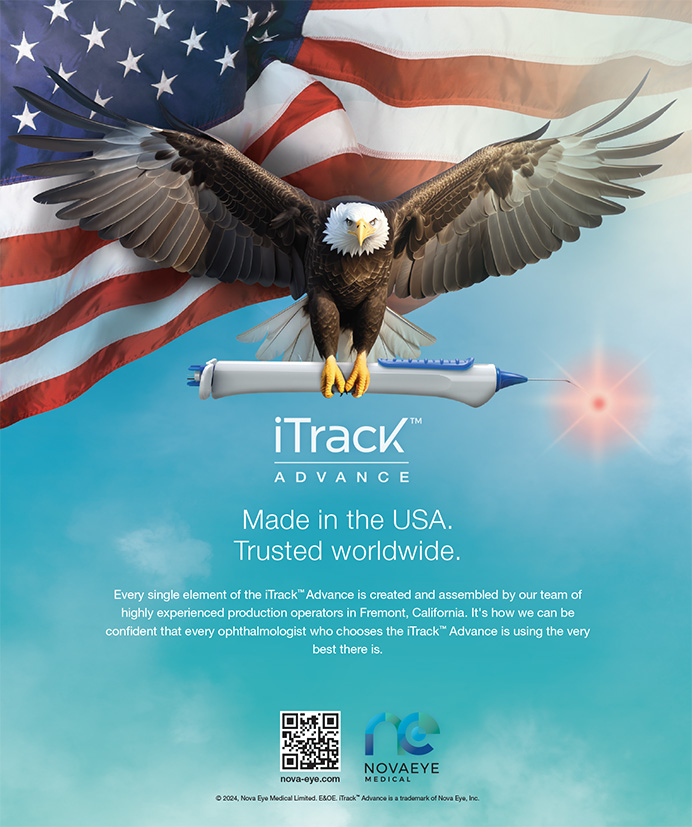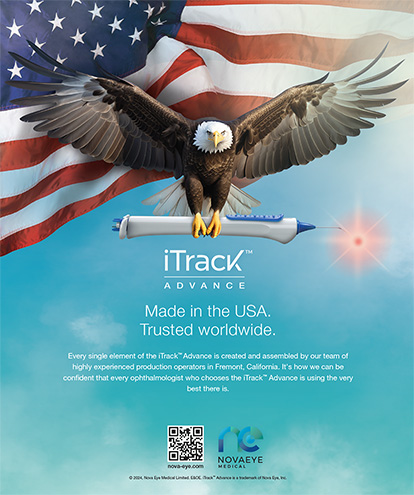In order to provide refractive IOL patients with successful surgical outcomes, we need to treat their preexisting, surgically induced, and residual postoperative astigmatism. Although excimer photoablation is extremely effective, we should consider limbal relaxing incisions (LRIs) as an alternative.
THE INCISION'S LOCATION
Before performing LRIs, we first need to ask ourselves a very simple question: Where are we going to place them?
Surgeons should refer to a printout of the patient's preoperative corneal topography or keratometry to determine the incision's location. I advise that surgeons never base their incision on the refractive axis during cataract surgery, because lenticular astigmatism may be a factor, which will be absent following surgery. The one exception to this rule is after toric IOL implantation when keratometry is meaningless and the refraction is the correct axis for the incision. Although both keratometry and topography are useful, I prefer the latter. An important point is that the biggest mistake I see doctors make when performing LRIs is that they plot their incisions at their keratometric or topographic axis preoperatively and do not consider the surgically induced cylinder.
INDUCING CYLINDER
When placing LRIs, it is important to consider how the cataract incision will affect the patient's existing astigmatism. A simple way to determine the effect of the cataract incision on astigmatism is to place the incision exactly in the steep or flat corneal axis. The difference between the pre- and postoperative cylinder is induced by the incision. If the cylinder is at 90°, for example, and a surgeon places the incision at 90° and starts with 1.00 D of cylinder, he will end up with 0.50 D of cylinder. In other words, the incision created 0.50 D of cylinder. That is not what happens most of the time, however. Usually the incision is placed off axis and the two vector forces of preexisting cylinder and surgically induced cylinder are calculated with vector analysis.
NOMOGRAMS
When determining how much cylinder an incision will create, a nomogram from Warren Hill, MD, is helpful and available at www.dr.hill.com. Most doctors produce a little less than 0.50 D of cylinder, depending on where they place the incision.
Surgeons can also use a vector analysis of the preexisting cylinder and the cylinder induced by the incision to determine the location and length of the LRI. For most surgeons, however, this is not practical. Instead of learning vector analysis, surgeons can visit www.LRICalculator.com, a Web site created by Advanced Medical Optics, Inc. (Santa Ana, CA), that will instruct them where to place incisions. The Web site includes my Donnenfeld nomogram. Users of the Web site get a surgeon's view of the eye, which illustrates where the steep axis is located based on topography or keratometry. Users then enter the steep and flat keratometry readings. The Web site will use a green line to indicate where the incision should be made. The yellow line signifies the preoperative keratometry, and the black line represents the flat axis. Surgeons can print out the diagram to bring to the OR, or the office, to use as a template (Figure 1).
CONCLUSION
Patients who receive presbyopia-correcting IOLs will not tolerate a small refractive error. I routinely treat 0.50 D of cylinder in a symptomatic patient. When a surgeon transitions from cataract to refractive IOL surgery, it is important to pay attention to details. One of the most important concepts is to treat small residual refractive errors. Learning to perform LRIs is a major step that many surgeons will take to become excellent refractive cataract surgeons, and the good news is that it is an easy change to make.
Eric D. Donnenfeld, MD, is a partner in Ophthalmic Consultants of Long Island and is a trustee of Dartmouth Medical School in Hanover, New Hampshire. He is a consultant to and performs research for Advanced Medical Optics, Inc., Alcon Laboratories, Inc., and Bausch & Lomb, but he acknowledged no financial interest in the products mentioned herein. Dr. Donnenfeld may be reached at (516) 766-2519; eddoph@aol.com.


